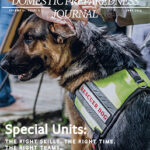- Articles, Communication & Interoperability, Critical Infrastructure, Emergency Management, Emergency Medical Services, Fire, Hospitals, Law Enforcement, Military, Science & Technology, Terrorism, Transportation
- Kelly R. McKinney and Joseph Picciano
In early 2007, the Federal Emergency Management Agency (FEMA), working with state and local emergency managers, developed what is called the Gap Analysis Tool. That Tool provides, among other things, a simple method to determine the “resource gap” – i.e., the resources required for a disaster response that are beyond the existing ability of state and local governments to provide. Although not universally popular with state and local governments, over the past year the Gap Analysis Tool has, if nothing else, promoted awareness of the resource gap throughout all levels of government.
Federal, state, and local emergency managers share a collective responsibility for disaster preparedness, response, and recovery. Preparedness, a task that can never truly be completed, is the most important and perhaps the most difficult component of that responsibility. In the post-Katrina world, U.S. emergency managers have focused more on catastrophic preparedness than ever before in the nation’s history. After Katrina the New York City Office of Emergency Management (NYCOEM) took a hard look at its own catastrophic preparedness capabilities and tried to visualize the impact of a major hurricane on the 8.2 million residents of New York City. Today, the New Jersey Office of Homeland Security and Preparedness (NJOHSP) – along with the NYC Urban Area Working Group (UAWG), the Northern New Jersey UAWG, and various other state and local partners in New York, New Jersey, and Connecticut – are working together to build enough resilience to recover after a catastrophic event that could adversely affect the 22 million people who live in the greater metropolitan area in and around New York City.
The scope of the preparedness task is enormous. It includes, among other things, the development of a continuing real-time awareness of existing resources and, perhaps more importantly, the shortfalls, or “gaps,” in those resources. It also includes the development of a comprehensive plan to determine how the resources would be received and deployed to support the response and recovery effort.
The focus at NYCOEM, therefore, is on information and planning – the principal building blocks of preparedness (see Table 1). Considered in that context, information means determining what resources will be needed, and planning means determining how those resources will be requested and used.
Following is a brief summary of the major components of the Information and Planning building blocks:

I – Information: Information is the bedrock of effective planning. It defines the scope of an organization’s (or political jurisdiction’s) plans and provides the basis for the development of preparedness capabilities. Because it is impossible to predict the future, especially for disaster scenarios, reliable data can be scarce. NYCOEM uses the following step-by-step process to gather the information necessary to develop its preparedness plans:
- Risks: Determine the range of potential disasters likely to be faced. The focus here is on the impacts described by the National Planning Scenarios that were spelled out in 2004 by the Homeland Security Council
- Impacts: Predict the effect of these disasters on population, critical infrastructure, and government operations. Impact numbers include projected estimates on morbidity and mortality, damage to existing structures (e.g., housing, hospitals, police/fire stations), the effect on utilities (power, water/wastewater, telecoms), and the quantity and types of debris generated. Understanding the possible long-term effects, which range from housing shortages to unemployment and other economic problems, is critical to ultimate recovery from a catastrophic event.
- Resources required: Determine the personnel, equipment, and expertise needed to respond and recover. Included in that information are food, water, and ice consumption rates, for community distribution, flow rates through public distribution points, hospital surge capacities, specific details on various types of heavy equipment and on emergency power generators, and equally specific estimates on the staff expertise likely to be available. Also considered are the critical resources required for businesses to begin operations as soon as possible after a major event. Resource identification in this area ultimately speeds recovery by eliminating the reliance on government.
- Resources available: Know the personnel, equipment, and expertise assets that are already on hand and probably can be deployed. NYC keeps this information current in an accessible database called the Citywide Asset and Logistics Management System (CALMS). The New Jersey Office of Emergency Management (NJOEM) keeps a similar Resource Data Base (RDB) for critical assets.
- Resource gap: Determine the personnel, equipment, and expertise that are not available. The State of New Jersey, to cite but one jurisdictional example, has significant personnel, equipment, and expertise that it can deploy for most responses, but a catastrophic event probably will require assets that are beyond its capacity. The list of those assets constitutes what is called the resource gap.
- Sources of supply: Know where those resources will come from. The development of this information requires engaging with all levels of government over what might well be a rather large geographic area, and with the private sector, to identify the sources of the additional resources that will be needed.
- Supply details: Know the information required to get the right supplies, materials, personnel, etc., to the right place at the right time. The task here is to identify, in advance, detailed information on the full range of equipment and personnel resources that will probably be required. Supply planning with private-sector organizations to support their external requirements is important. Some examples: public road clearance for major food distributors; providing interim housing for key workers in important support sectors; and upgrading security in general – all will allow businesses to quickly provide the critical supplies needed in a major recovery after a catastrophic event.
A typical example of the “supply details” required is shown in Table 2, which lists the information necessary to effectively request and deploy an emergency power generator.

II – Planning: NYCOEM and NJOEM are using the information gathered to date to develop contingency plans (hazard-specific as well as all-hazards plans) that clearly define roles and responsibilities, the post-event decisions that will have to be made, the identification (by job title if not by name) of the officials who are authorized to make those decisions, and the estimated times when the decisions can and/or must be made.
Development of the FEMA Gap Analysis Tool
After the difficulties encountered during the Hurricane Katrina response in 2005, FEMA embarked on an ambitious effort to find a way to review “core readiness capabilities” in hurricane-prone areas. In early 2007, the agency reached out to state and local emergency managers in the Northeast area of the country to help it build a better readiness capability tool. Among the agencies consulted were the NYCOEM, the NJOEM, and the State of New York Emergency Management Office.
In April 2007, a team of key government stakeholders – including officials from FEMA headquarters as well as five FEMA Regions (I, II, III, IV, and VI), the U.S. Army Corps of Engineers, the Department of Defense, and the Department of Health and Human Services (HHS) – convened at the Brooklyn headquarters of NYCOEM. For three long days the representatives of those agencies brainstormed, discussed, argued, and collaborated to produce the first Gap Analysis Tool. That tool includes a set of scenario-based “readiness worksheets” postulating the resources needed for seven critical functional areas: evacuation, sheltering, commodity distribution, debris removal, housing, medical needs, and communications/fuel.
Figure 1 shows a “screen shot” of the first readiness worksheet, which is broken down into three main areas, as follows:

Capability Over Time: Estimates of how the resource gap is likely to change in the days after the event
Asset Assessments: Estimates of the probable resource gap in specific functional areas
Capability Over Time: Estimates of how the resource gap is likely to change in the days after the event
Thanks primarily to the Gap Analysis Initiative, FEMA was able to work quickly to build a workable Gap Analysis Tool. Over the next several weeks the officials from the FEMA regions and hurricane-prone states and local communities participating in the Brooklyn meeting met again to complete the analysis, which basically consists of “structured discussions” with local jurisdictions to better understand potential disaster-response “asset gaps” in the critical areas. After that data was collected it was reviewed and validated by individual states and adjusted, if and when needed, to ensure the accuracy of the information listed.
This year the Gap Analysis concept, although originally developed to deal with hurricanes, has been expanded to apply to all-hazards disasters of any type. That step was taken as part of an ongoing FEMA effort to build upon the lessons previously learned and to apply the Gap Analysis Tool to all locations for all hazards on an ongoing basis.
Table 3 shows how use of the Gap Analysis Tool has evolved.

Depending, understandably, on who is asked, the Gap Analysis process is described as either a major step forward in planning or an unnecessary additional paperwork burden. FEMA officials say that the agency is being proactive, and that it does not have the luxury of waiting until disaster strikes to identify potential future needs and shortfalls. Some state and local emergency managers, however, complain about the time needed to complete the paperwork required – and say they have yet to see any benefit from it.
There probably is some justification for both points of view, but most senior decision makers seem to believe that the benefits provided by this new planning tool will become more apparent over time. If nothing else, the Gap Analysis Tool provides a consistent estimate of the readiness strengths and vulnerabilities of agencies at all levels of government. It also allows state and local emergency managers to assess their own overall readiness capabilities and to improve the emergency operations planning needed to deal with known hazards. Used wisely, the Tool should prove to be an important preparedness building block that can be used by state and local emergency managers throughout the country.

Kelly R. McKinney
Kelly R. McKinney is Deputy Commissioner for Planning and Preparedness at the New York City Office of Emergency Management. A professional engineer with twenty years experience in public and private-sector engineering and management, he previously was the Associate Commissioner for Environmental Health at the New York City Department of Health and Mental Hygiene. He holds an MPA from Columbia University and a Bachelor of Science degree in Mechanical Engineering from the University of Kansas.
- This author does not have any more posts.

Joseph Picciano
Joseph Picciano joined the New Jersey Office of Homeland Security & Preparedness in 2007 following thirty years of service with the Federal Emergency Management Agency (FEMA) and is now leading that state’s multifaceted efforts to achieve the preparedness goals established in the wake of the 2001 terrorist attacks in Washington, D.C., and New York City. While serving with FEMA Picciano was the deputy principal federal official (PFO) assigned to the response operations following Hurricane Katrina. Prior to assuming that post he was acting regional director for FEMA’s New York City office and, in that assignment, oversaw the federal recovery effort that followed the 9/11 attacks on the World Trade Center towers.
- This author does not have any more posts.






